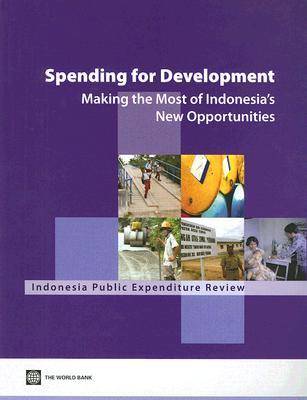After almost a decade of successful macroeconomic management and several bold policy decisions, Indonesia is finally in a position of fiscal strength. Since 2006, Indonesia has freed up 'fiscal space' of about US$15 billion. Equivalent to around 7 percent of GDP, this is the largest increase in additional fiscal resources since the 1973-74 oil revenue windfall, providing a tremendous window of opportunity for Indonesia to upgrade its public services. 'Spending for Development: Making the Most of Indonesia's New Opportunities' is the first Public Expenditure Review to cover national and sub-national spending in Indonesia. It sheds light on the impact of the country's transition towards decentralization and the new ways in which public resources are now administrated and allocated. An essential source of analysis for all stakeholders in public finance in Indonesia, some of the most important findings include: 1. Thanks to the fuel subsidies cuts in 2005, Indonesia freed up US$10 billion in 2006 to spend on development programs. An additional US$5 billion also came available from increasing revenues and declining debt service. 2. Despite the 2005 domestic fuel price adjustments, Indonesia still spends US$12 billion on subsidies annually, mainly on fuel and electricty. 3. Thirty-six percent of all public spending is now in the hands of sub-national governments. 4. While spending on education since the crises has nearly doubled and spending on health has increased almost 70 percent, spending on infrastructure investment remains significantly less than pre-crisis levels (below 3.4 percent of GDP). 5. Indonesia spends about 50 percent of its total annual capital expenditure in the final quarter of the year.
- ISBN10 082137320X
- ISBN13 9780821373200
- Publish Date 20 February 2008
- Publish Status Active
- Out of Print 10 October 2021
- Publish Country US
- Imprint World Bank Publications
- Format Paperback
- Pages 224
- Language English
